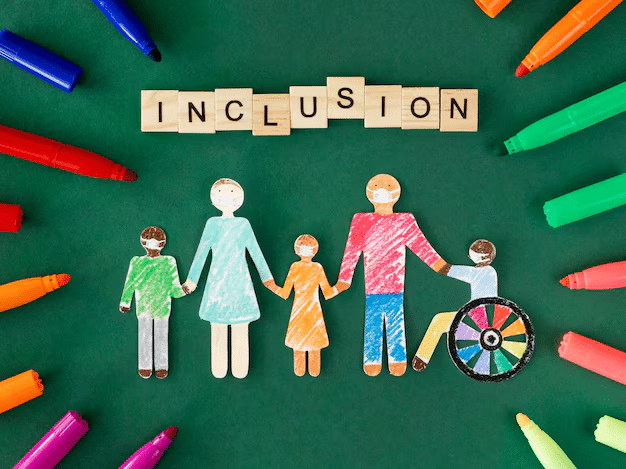Special education focuses on providing tailored learning opportunities for students with disabilities, ensuring they have equitable access to education. However, despite its importance, special education faces numerous challenges that affect students, teachers, and families alike. These challenges span from resource limitations to societal misconceptions, creating barriers to effective implementation.
This article delves into the key challenges in special education and potential strategies to address them.
1. Lack of Adequate Funding
Funding is one of the most significant obstacles in special education.
- Limited Resources: Schools often struggle to provide necessary resources such as assistive technology, specialized equipment, and individualized learning materials.
- Underpaid Teachers: Special education teachers frequently face lower salaries despite the additional training and expertise required.
- Inequitable Distribution: Funding disparities between school districts result in unequal access to special education services.
2. Shortage of Qualified Special Education Teachers
The demand for skilled special education teachers often exceeds supply.
- High Turnover Rates: Stress, burnout, and lack of support contribute to frequent turnover among special education professionals.
- Specialized Training Needs: Teachers require extensive training in areas like behavior management, differentiated instruction, and disability-specific strategies.
- Recruitment Challenges: Attracting educators to the field remains difficult due to the perception of higher workloads and lower job satisfaction.
3. Diverse Needs of Students
Special education encompasses a broad spectrum of disabilities, making it challenging to address each student’s unique needs effectively.
- Individualized Education Plans (IEPs): Developing and implementing IEPs can be time-consuming and complex, requiring input from multiple stakeholders.
- Wide Range of Disabilities: From autism and ADHD to physical impairments and learning disabilities, the diversity of needs demands flexible and varied approaches.
- Behavioral Challenges: Some students exhibit behaviors that require intensive support, posing difficulties in inclusive or traditional classroom settings.
4. Insufficient Parental Support and Engagement
Parental involvement is critical in special education, but it can be hindered by various factors.
- Lack of Awareness: Parents may not fully understand their child’s rights or the services available under laws like the Individuals with Disabilities Education Act (IDEA).
- Time Constraints: Balancing work, caregiving, and participation in school activities can be overwhelming for families.
- Advocacy Barriers: Parents may struggle to navigate bureaucratic processes to secure appropriate services for their child.
5. Challenges in Inclusion

Integrating students with disabilities into general education classrooms (inclusive education) poses significant challenges.
- Teacher Readiness: General education teachers may lack training or experience in supporting students with special needs.
- Peer Relationships: Students with disabilities may face social isolation, bullying, or difficulty forming friendships in inclusive settings.
- Resource Gaps: Successful inclusion often requires additional aides, training, and classroom modifications, which are not always available.
6. Stigma and Misconceptions
Societal attitudes toward disabilities can negatively impact special education.
- Stereotypes: Misconceptions about the abilities of students with disabilities can lead to lowered expectations and limited opportunities.
- Bullying: Students with disabilities are at higher risk of being bullied, which affects their self-esteem and academic performance.
- Awareness Gaps: A lack of understanding among peers, teachers, and the community can create a less supportive learning environment.
7. Legal and Bureaucratic Challenges
Navigating the legal and administrative requirements of special education is often complex.
- Compliance with Laws: Schools must meet strict legal mandates, such as providing Free Appropriate Public Education (FAPE), which can be challenging to implement consistently.
- Paperwork Burden: Special education teachers often face an overwhelming amount of documentation, reducing the time they can dedicate to teaching.
- Dispute Resolution: Conflicts between schools and families over services or placements can lead to lengthy and costly legal battles.
8. Technological Gaps
Technology is a critical enabler in special education, but access remains uneven.
- Assistive Technology Costs: Many schools and families cannot afford devices or software that could significantly enhance learning.
- Training for Use: Teachers and students may require specialized training to use assistive technologies effectively.
- Digital Divide: Students from low-income families may lack access to the internet or devices for online learning.
Conclusion
Special education is vital for ensuring that students with disabilities receive the support they need to succeed. However, challenges like inadequate funding, teacher shortages, and societal stigma create barriers to delivering effective education. Addressing these issues requires a collaborative approach involving governments, schools, teachers, families, and communities. By prioritizing resources, training, and awareness, we can create an inclusive and supportive educational environment for all learners.
FAQs
1. What is the biggest challenge in special education?
The lack of funding and resources is one of the biggest challenges, affecting the availability of trained staff, assistive technology, and tailored programs.
2. How can schools address teacher shortages in special education?
Schools can offer competitive salaries, professional development opportunities, and incentives like student loan forgiveness to attract and retain special education teachers.
3. What role do parents play in special education?
Parents play a crucial role by advocating for their child’s needs, participating in IEP meetings, and reinforcing learning at home.
4. How can inclusion be improved in schools?
Inclusion can be enhanced through teacher training, peer awareness programs, and the provision of resources like classroom aides and adaptive equipment.
5. What laws protect the rights of students in special education?
Key laws include the Individuals with Disabilities Education Act (IDEA), Section 504 of the Rehabilitation Act, and the Americans with Disabilities Act (ADA).


